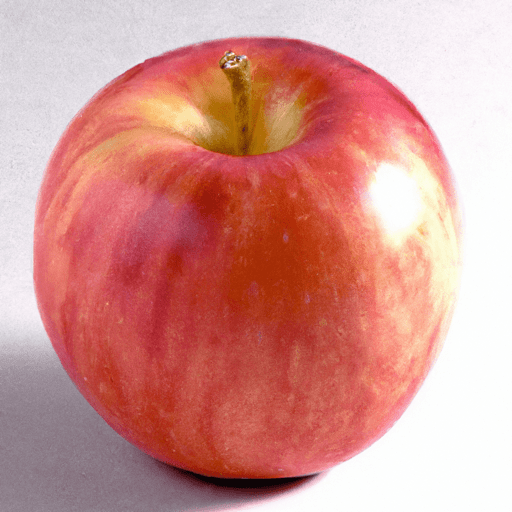The Fuji Apple: A Delightful Treat for Food Enthusiasts
If you’re a food lover with a keen interest in cooking, then the Fuji apple is a delightful treat that should definitely be on your radar. Known for its enticing flavor profile, versatile nature, and rich nutritional content, the Fuji apple is a remarkable culinary gem. In this blog post, we’ll delve into the world of Fuji apples, exploring their taste, common uses in cooking, nutritional value, and uncovering some interesting history and facts about this beloved fruit.
A Burst of Flavor in Every Bite
When it comes to taste, Fuji apples definitely don’t disappoint. Firm, juicy, and incredibly crisp, they offer a balance of sweetness and acidity that makes them universally appealing. These apples have a creamy white flesh, featuring a perfect blend of flavors that range from honey-sweetness to slightly tart undertones. The complexity of their taste profile sets Fuji apples apart from other varieties, making them a popular choice for both cooking and eating fresh.
Versatile in the Kitchen
Thanks to their exceptional taste and texture, Fuji apples have become a go-to ingredient in many kitchens. Whether used in sweet or savory dishes, their versatility knows no bounds. When it comes to cooking, Fuji apples have a unique ability to hold their shape when baked, making them an excellent choice for pies, tarts, and crisps. They lend a natural sweetness that enhances the flavor of any dessert, while their firmness provides a pleasing contrast to softer ingredients.
In addition to baking, Fuji apples are equally at home in savory recipes. They can be thinly sliced and added to salads, bringing a refreshing crunch and a touch of sweetness to complement savory ingredients like nuts or cheese. When cooked down, their natural sugars caramelize beautifully, making them a fantastic addition to sauces, glazes, and chutneys.
A Nutritional Powerhouse
Aside from their delightful flavor and culinary versatility, Fuji apples also offer a host of health benefits. Packed with essential nutrients, eating Fuji apples can help support your overall well-being. These apples are a great source of dietary fiber, vitamins C and K, and potassium. They are also rich in antioxidants, which can aid in reducing inflammation and promoting a healthy immune system. As a bonus, Fuji apples are low in calories and fat, making them an excellent choice for those watching their waistlines.
A Story Worth Savoring
To truly appreciate the Fuji apple, it’s important to understand its intriguing backstory. Developed in Japan during the late 1930s, Fuji apples are a crossbreed between Red Delicious and Ralls Janet apples. They were named after Mount Fuji, the iconic Japanese volcano, for their vibrant red color and the country’s admiration for this stunning natural landmark. In the 1980s, Fuji apples gained popularity and were introduced to the United States, where they quickly captivated the taste buds of people nationwide.
Fun Facts About Fuji Apples
- The Fuji apple is one of the most cultivated and consumed apple varieties worldwide.
- It can be stored for an extended period while maintaining its juicy freshness, making it an ideal choice for year-round enjoyment.
- Fuji apples are known for their thick skin, which gives them added protection and helps them retain their crispness.
- China is the largest producer of Fuji apples, followed by the United States.
- Every year in Japan, the arrival of the first Fuji apples from the Nagano region is celebrated with the “First Apple Auction,” where prices can reach jaw-dropping sums.
With its incredible taste, versatility in the kitchen, and impressive nutritional profile, it’s no wonder why the Fuji apple has gained such popularity among food enthusiasts worldwide. Its journey from Japan to your plate is a testament to the incredible fusion of flavors and cultures that the culinary world embraces. So, why not grab a Fuji apple, let your taste buds take a delightful journey, and explore the endless possibilities this exceptional fruit has to offer?
Fuji Apple
Origin: The Fuji apple is a cultivar of apple that was developed in Japan in the late 1930s and early 1940s. It was named after Fujisaki, a village in the Aomori prefecture of Japan.
Common Uses: Fuji apples are known for their crisp texture and sweet flavor. They are great for eating fresh, but can also be used in cooking and baking. They hold their shape well when cooked and are often used in pies, tarts, and applesauce. Fuji apples are also popular for juicing and making cider.
Nutritional Benefits: Fuji apples are a good source of dietary fiber and provide essential vitamins such as vitamin C and vitamin A. They also contain antioxidants, which help protect the body against damage from harmful free radicals. Additionally, Fuji apples are low in calories and fat, making them a healthy snack option.
Unique Properties: One notable characteristic of Fuji apples is their long shelf life compared to other apple varieties. They can stay fresh for several months when stored properly in cool, dry conditions. Another unique property is their yellow-green skin color, which often has a reddish blush. The flesh is usually firm, juicy, and creamy white.
Historical Significance: The Fuji apple gained popularity globally over the years due to its excellent flavor profile and long storage life. It has become one of the most widely grown apple varieties across different regions. Its sweet and refreshing taste has made it a sought-after apple choice by consumers worldwide.




Use the share button below if you liked it.
It makes me smile, when I see it.